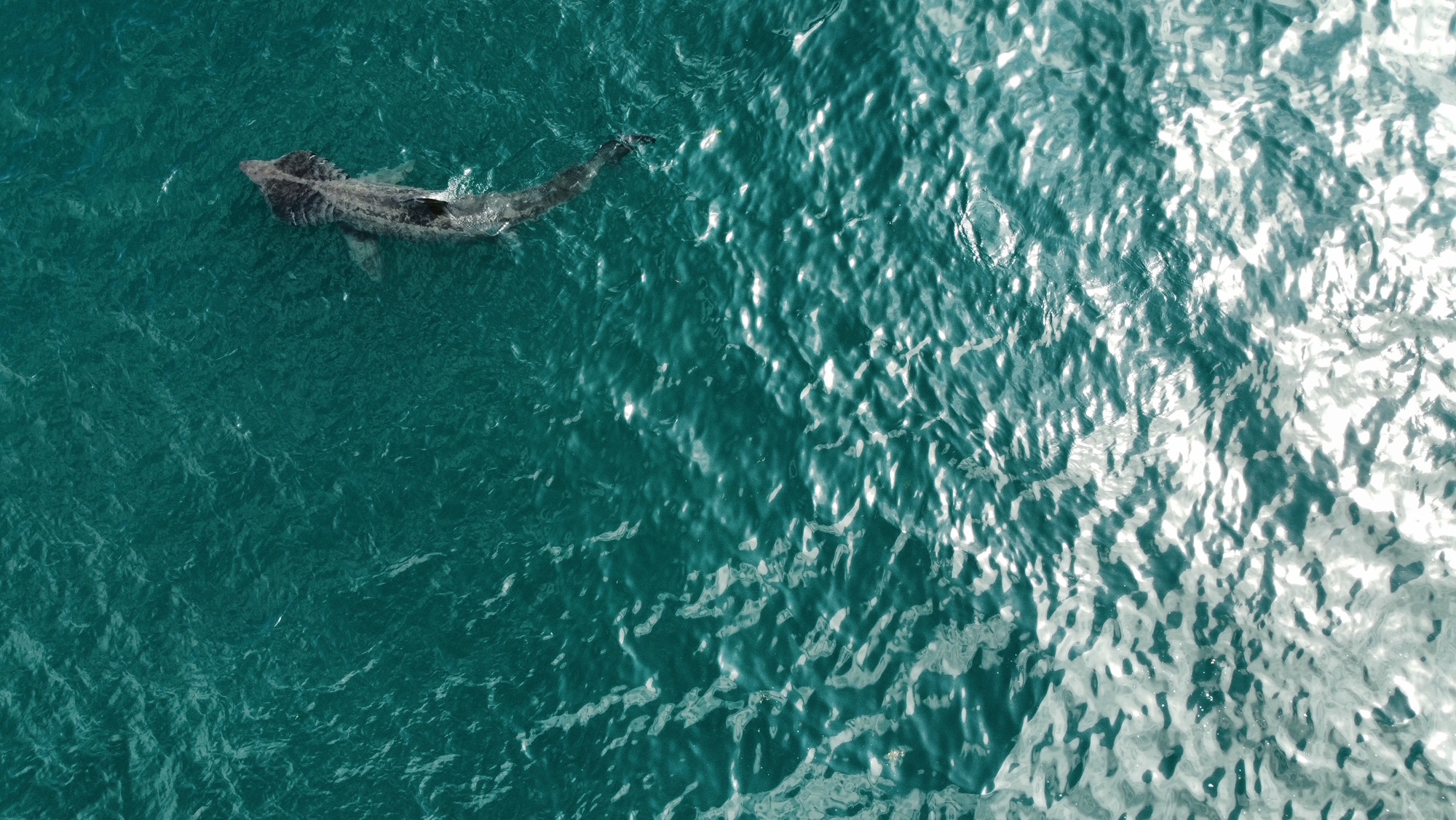
Studying Ireland’s ocean giant
An interview with basking shark researcher Haley Dolton
The basking shark, Cetorhinus maximus, is the second largest shark in the world and is regularly seen swimming off the coast of Ireland. But how much do we really know about these ocean giants? In this installment of the EcoEvo blog our co-editor, Lucy Harding sat down with PhD candidate and basking shark researcher, Haley Dolton to find out what it’s like studying these enormous sharks.
Lucy: So Haley, what was it about sharks that first got you interested in them?
Haley: I remember first being interested in sharks when I was reading an encyclopedia of animals and I read that sharks were fish! And that kind of blew my mind because of what I knew about sharks, they were more like mammals in my head; really powerful, can birth live young, can be social. So yeah, that really intrigued me. And when I started reading about them (because this was before the Internet!), and learnt more, like that they have these amazing senses, electrical senses, and they’re capable of doing amazing behavioural things, I think that really sparked my interest in sharks.
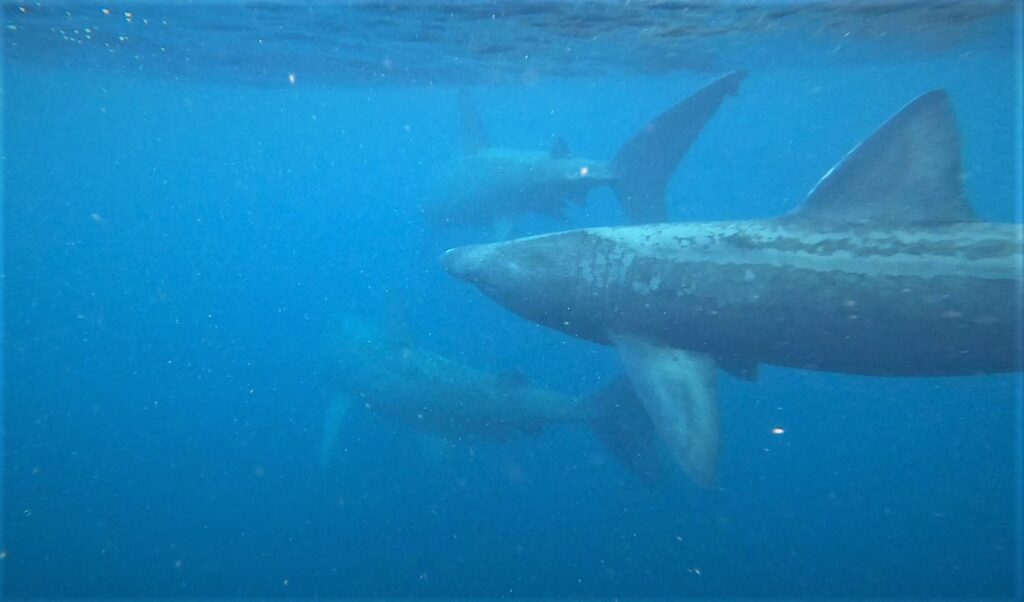
Lucy: What sets basking sharks apart from other large-bodied sharks, for you? Why study them over white sharks for example?
Haley: I know this sounds almost like a throw-away answer but I actually kind of fell into basking shark research, and then I grew to love them! It was the first opportunity that I was given to work in shark research in the Isle of Man, working with Manx Basking Shark Watch, and I just remember the first time I saw one I was like, “Oh my God, what is that?!” and it came right up to the boat, and I remember being shocked by the size of it! Any shark documentaries I’d seen, the only sharks really that were featured years ago were great whites because they’re the most *air quotes* “exciting” shark, but then I saw this basking shark, with the way it swims and what it looks like and I thought “Oh that looks like a great white but it’s massive!”. I think that that really sparked my interest in them.
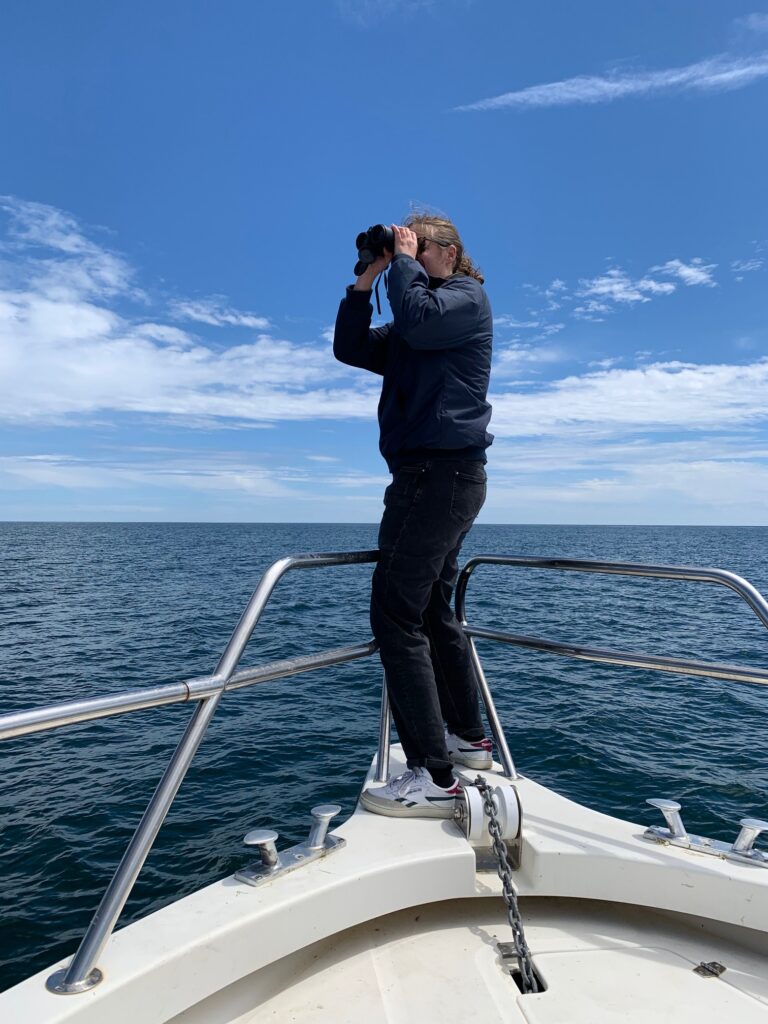
I learned more about them from being in the field and reading about them, I was trying to figure them out because they didn’t make a lot of sense to me. For example, they feed on zooplankton (so they’re filter feeders) and they’re the second largest shark species capable of undertaking powerful behaviours, but they feed on microscopic prey, all of this got me thinking “How are they doing this?!”. So I got obsessed with how weird they are! Like how are they behaving like they do?! As another example, they aggregate in large numbers, and we don’t really know why!
(Haley scans the water hoping to spot a shark fin. Photo captured by Dr Nicholas Payne).
We think it’s maybe related to mating or for saving energy, as they swim close to each other, but you know seeing that in the wild, for yourself, it really sparks the ideas in the mind and that set me on the path to studying basking sharks over any other shark species. That’s not to say that I’m not interested in other shark species of course, but more that it was just circumstance which led me to basking shark research in the first place, and then I fell in love with how weird they were!
Lucy: Well, that’s a good point you make in that, for research, you don’t always have to follow a particular species or a particular project. If you more follow opportunities, you never know where they’ll lead you to, and it could lead you into something that interests you more than you realised!
Haley: Yeah, that’s it! When I went to the Isle of Man, I learned loads about research and what areas of research there were. So, for instance, we were doing satellite tagging and collecting DNA samples and this is what I actually wanted to go into at the time, I wanted to use DNA to carry out genetic research of shark species and look at the evolution of traits. And so, I originally started off being interested in that question and then when I saw that they were doing this amazing satellite tagging work, with behavioral and social studies, whether that’s on the human side, so looking at the impact of anthropogenic activity on basking sharks, or whether that’s the social side of the fish themselves, studying how they gather in large numbers! So, that’s where I first got introduced into loads of different scientific areas of research which focused on this one species.
“without knowing enough about your study species, you can’t effectively conserve them”
Lucy: So, are basking sharks an endangered species?
Haley: Yes, basking sharks are an endangered species. They’re endangered globally which means that they’re of ‘conservation concern’. The reason that we’re researching them, particularly in the Payne lab at the minute, is because we don’t really know a lot about what makes them tick.
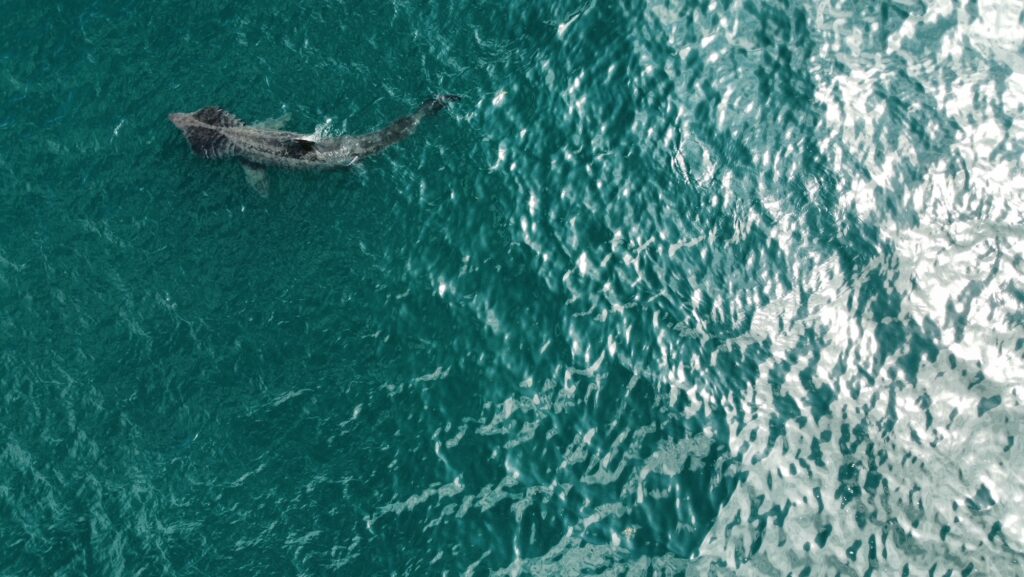
We’re trying to learn more about them because without knowing enough about your study species, you can’t effectively conserve them. To give an example, imagine if someone was trying to conserve me and they saw one day – let’s pick a really bad day – where I’ve gone to the pub for hours, then eaten a pizza, and I haven’t really moved a lot. It might make people think, that’s all I do so let’s give her that all the time! Well, I wouldn’t last very long! I’d have a great time, but I wouldn’t be very healthy.
And that’s why we study these animals, to get as much information as possible to really affect conservation policy and change because these are vulnerable species.
There were massive fishing industries for them, including in Irish waters, and although we no longer have those fisheries, they’re still very vulnerable to being accidentally caught in things like pot lines or in other fisheries related equipment. They are a vulnerable species to lots of kinds of anthropogenic activity, making conservation efforts even more important.
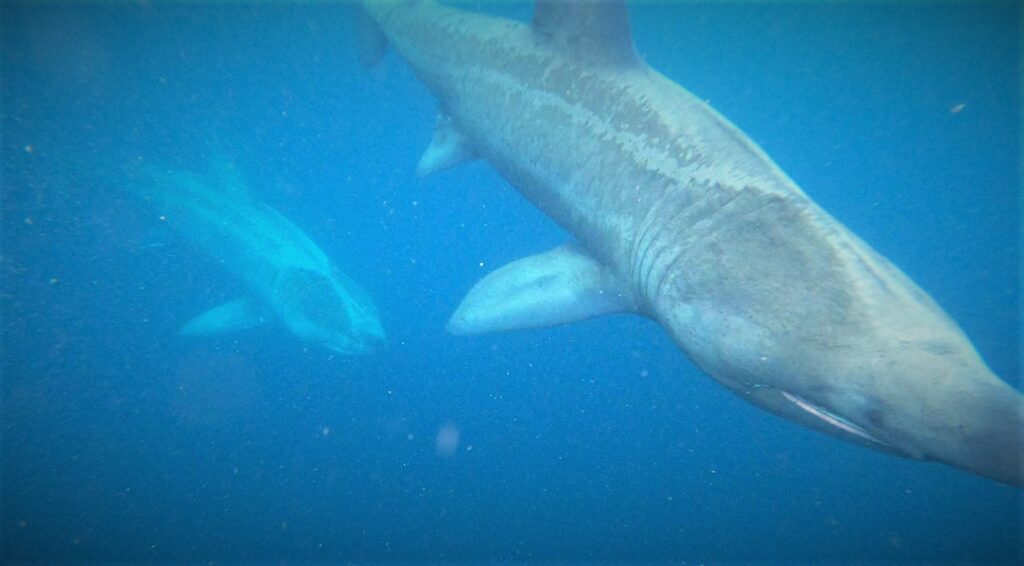
Lucy: And you said they are filter feeders and very large, so does that make them a difficult species to study?
Haley: Basking sharks are an unusual study species for sharks, in that we can’t fish for them or attract them to the boat, so we can’t research them in the ways we would with other species where you can do that. So, we’re very dependent on where and when they turn up and whether there’s a good weather window for us to get out and study them, which off the Irish coast is quite rare! So, everything needs to come together to allow us to go out and study them and in reality, I only have around six days to get my tags deployed, which just highlights how difficult they are to study.
Lucy: What does your current research on basking sharks focus on?
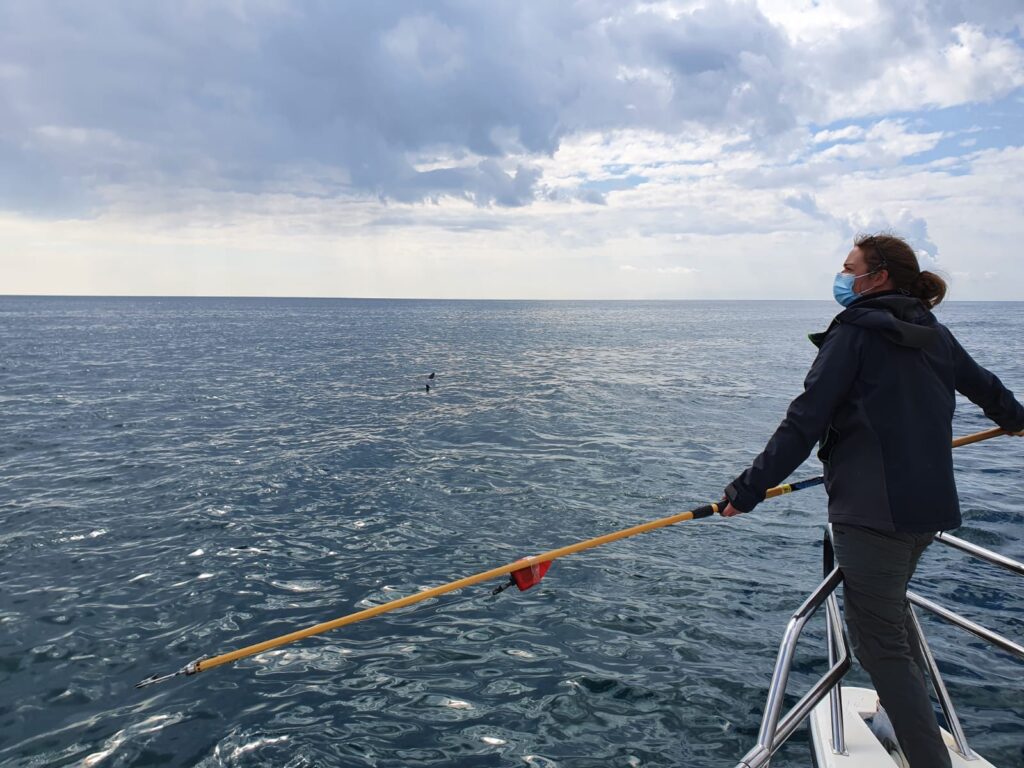
Haley: My current research really focuses on getting back to basics of what we know about the general biology of these animals. For example, looking at their anatomy, whether that’s the larger structures or microscopic features. I’m looking at how their anatomy can explain their behavior. So, as I said there’s so much we don’t know about basking sharks.
At the minute, off the Irish coasts, we’re getting hundreds of them in the spring and then later on throughout the summer, and they’re displaying this amazing behavior where they all gather and swirl around each other, which we think might lead to mating, but ultimately we don’t really know why they display this behaviour! So, my research is really focused on trying to explain these behaviors by looking at their anatomy and physiology and what we as scientists, the general public, or policymakers, can do to effectively conserve this species in Irish waters.
“it’s a really exciting time to be part of basking shark research in Irish waters”
This is all going on at an exciting time for basking sharks in Irish waters! Recently it was announced that they’ll hopefully gain protection under the Irish Wildlife Act and there’s been incredible public support for this in Ireland so it’s a really exciting time to be part of basking shark research in Irish waters and to hopefully make a positive change within their conservation.
Lucy: And when you’re out in the field, how do you actually study these animals?
Haley: Well, firstly we work closely with other researchers and the general public who very kindly tell us where and when they see the sharks; we’ve had loads of great sightings (and skippering of boats!) from the Irish Whale and Dolphin Group (IWDG) and individuals from different tour operators off the Irish coast like West Cork Charters (Dave Edwards) and Nick Masset (also part of IWDG), whose based near the Blaskets in Dingle, and of course, social media, which tells us where and when sharks have been seen. Then, we’ll scramble to get all our field kit ready and head over to the West Coast!
Normally with shark research we go out to a place where people are already fishing for sharks (for catch and release) or where we’re fishing for them for scientific research and this normally involves attracting them to the boat (with bait) but because we can’t do that with basking sharks, we basically drive the boat up and down the coast slowly, surveying with binoculars to try and spot that characteristic fin sticking out of the water.
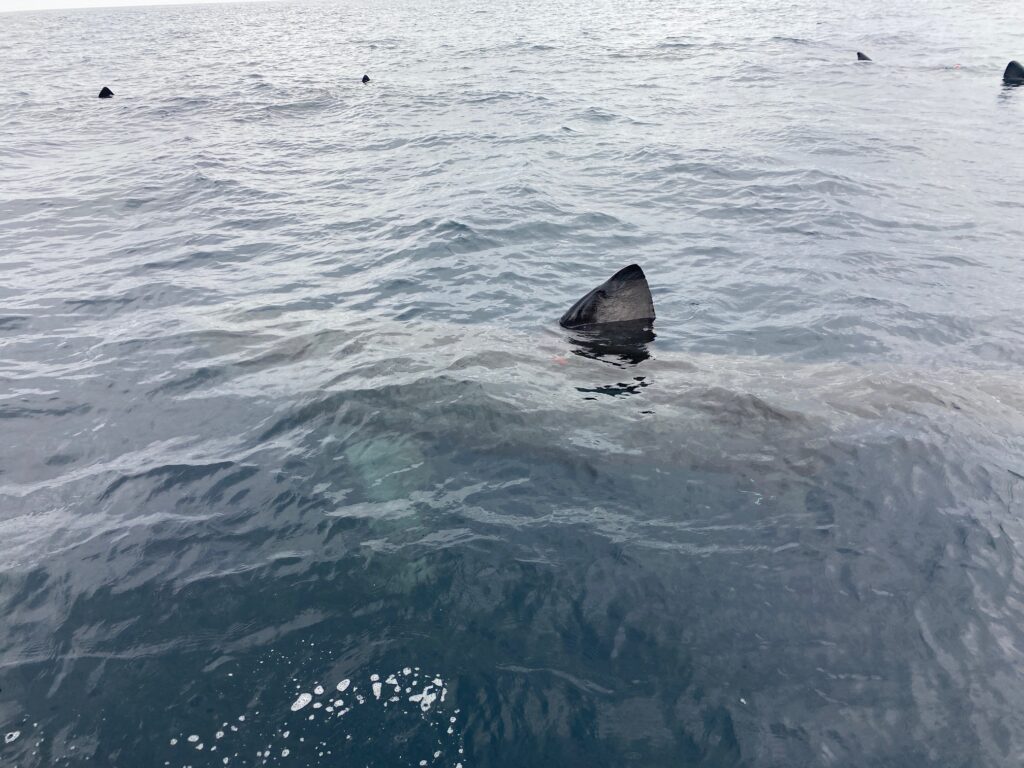
Lucy: And so, when you do spot a fin, what happens next?
Haley: In basking shark research we actually deploy the biologgers without touching the shark at all (apart from the actual deployment itself). We carefully approach the shark in the boat, deploy the tag, and then we’re off again! This all takes a matter of seconds, so that we’re actually only beside the animal for a couple seconds as we deploy the biologger. Some sharks don’t even react at all, they just carry on swimming or feeding at the surface, which is a good indication they haven’t been disturbed.
I should point out that any research we do on sharks is conducted under license from the HPRA (Health Products Regulatory Authority) ethics board for animal studies, as to not cause stress to the animals.
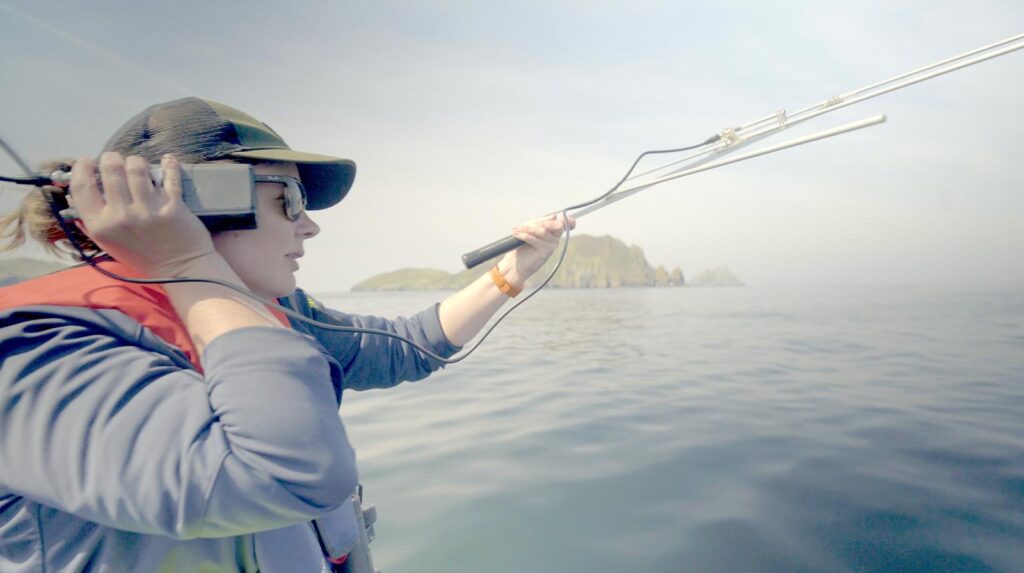
Lucy: How is your research going so far? What are your plans going forward for the research?
Haley: The research that is focused on basking shark biology, ecology and behavior has gone really well so far and we’ve found out some really, really interesting things which I’m dying to talk about but I can’t at the moment, but watch this space! There’s lots of cool stuff coming soon!
My research interest has grown from my supervisors, Nick Payne, Andrew Jackson and Jonathan Houghton, supporting my curiosity for this species and a collaboration I made when I first started shark research all those years ago (Jackie and Graham Hall who ran Manx Basking Shark Watch). Now this project is growing and we’ve established new collaborations with some incredible researchers from Oregon State University (Big Fish Lab) and Stanford University, who came over this year for fieldwork. Together, we’re trying to collect and analyse even more data about what the sharks are doing and how they’re behaving. There’s been lots of steep learning curves with doing this research as well, but overall, it’s gone really well and we found out some really cool stuff, which will hopefully come out soon!
“if you do see something, take lots of pictures”
Lucy: That’s great, I can’t wait to see what you’ve found out! Well, for my last question, as a lot of our readers may not necessarily be in the scientific field, is there any way they could get involved in conservation efforts or research to help these threatened sharks?
Haley: Yes! People can get involved by reporting their sightings of any sharks to groups such as the Irish Basking Shark Group and Irish Whale and Dolphin Group and these can feed into scientific research. Also, if you do see something, take lots of pictures because then it’s possible to identify individuals by nicks and cuts on their dorsal fin and this is a great example of a non-invasive way of looking at social behavior or whether sharks are returning year on year to an area, indicating it might be an important area for feeding or breeding or pupping.
You can also get involved with any campaigns that you see going on for the protection of these animals. Support from the public, alongside the work and support from Minister Noonan and TD Jennifer Whitmore is actually what was instrumental in the recent campaign to have the basking shark added to the Irish Wildlife Act; it was a great campaign led by the Irish Basking Shark Group to get basking sharks protection in Irish waters and part of that was a petition that was signed by the general public. It gained incredible support from the public, with I think over 20,000 signatures, which is amazing and hopefully they’ll be protected under Irish law soon.
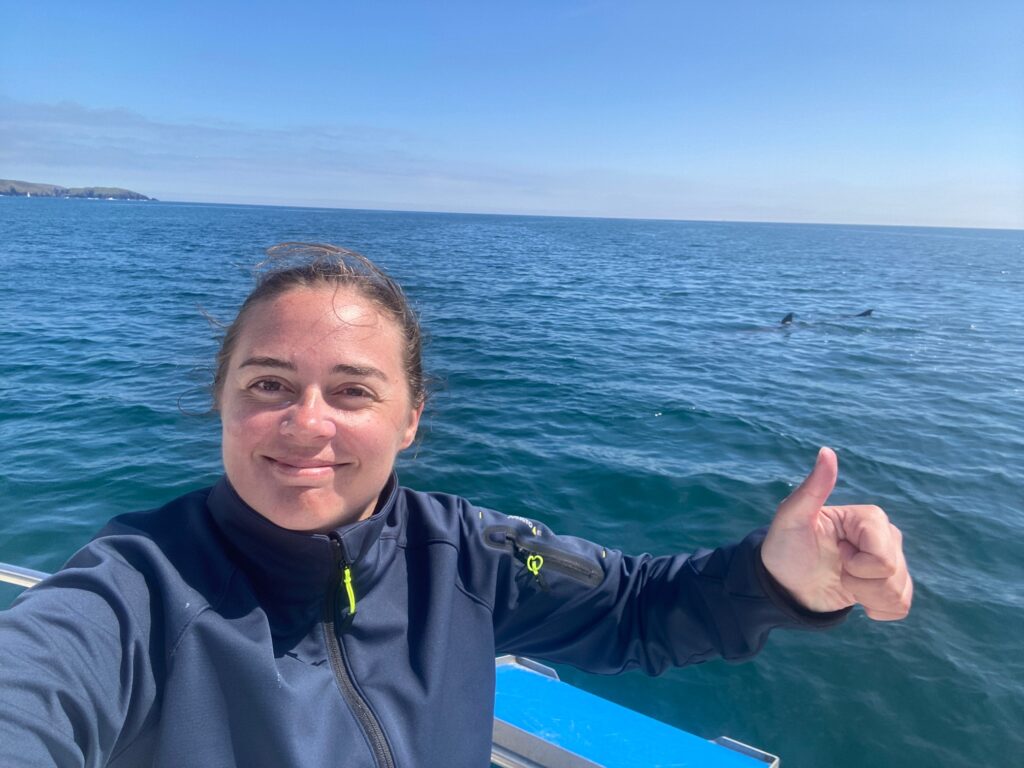
Haley is a PhD student in Zoology at Trinity College Dublin, and you can find her on Twitter @haleydolton. Haley’s work has been funded by the Irish Research Council, with support from the Fisheries Society of the British Isles. Nick Payne is funded by Science Foundation Ireland.
